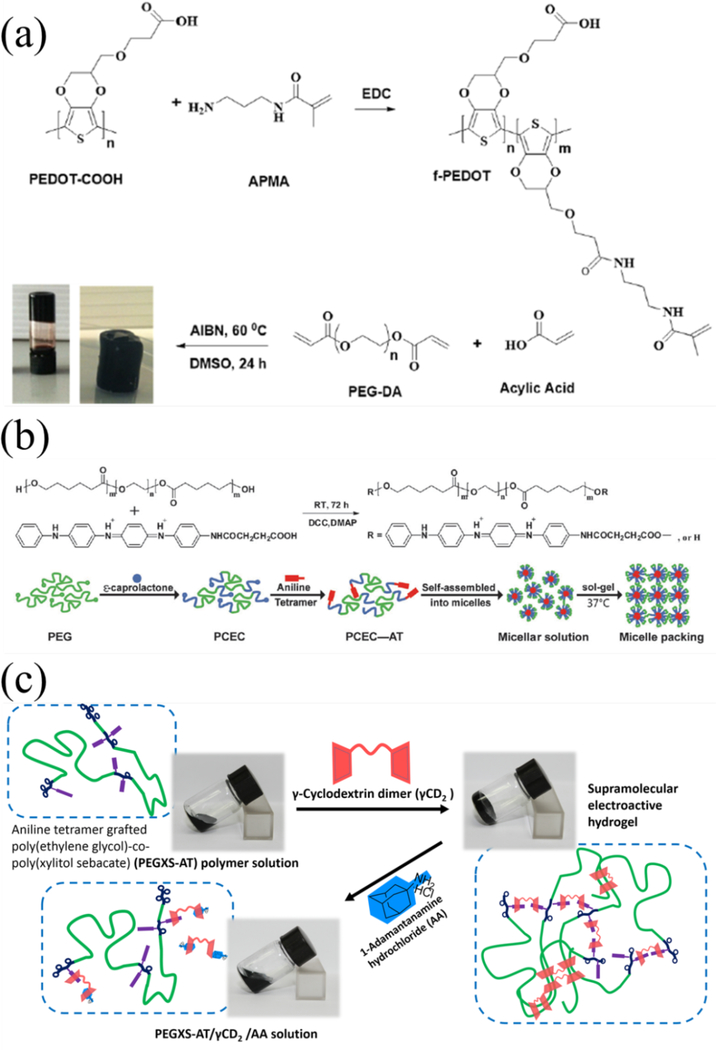Figure 5.
Conductive hydrogels synthesized via chemical or physical crosslinking. (a) PEDOT hydrogel was synthesized via chemical crosslinking by free radical polymerizations. Reprinted with permission from reference 105. Copyright 2016 American Chemical Society. (b) A single component hydrogel based on PCL–poly(ethylene glycol)–PCL grafted aniline tetramer copolymers via thermal gelation process. Reproduced from reference 107 with permission of The Royal Society of Chemistry. http://dx.doi.org/10.1039/C5TB01658D (c) Formation of injectable conductive hydrogels via host−guest interaction between γ-cyclodextrin dimer host (γCD2) and poly(polyethylene glycol-co-sebacate-co-glycerol-co-xylitol)-g-aniline tetramer (PEGXS-AT) guest copolymer. The reversible sol−gel transition was observed by subsequent alternation addition of 1-adamantanamine hydrochloride (AA) and γCD2 into the mixture. Reprinted with permission from reference 108. Copyright 2014 American Chemical Society.

